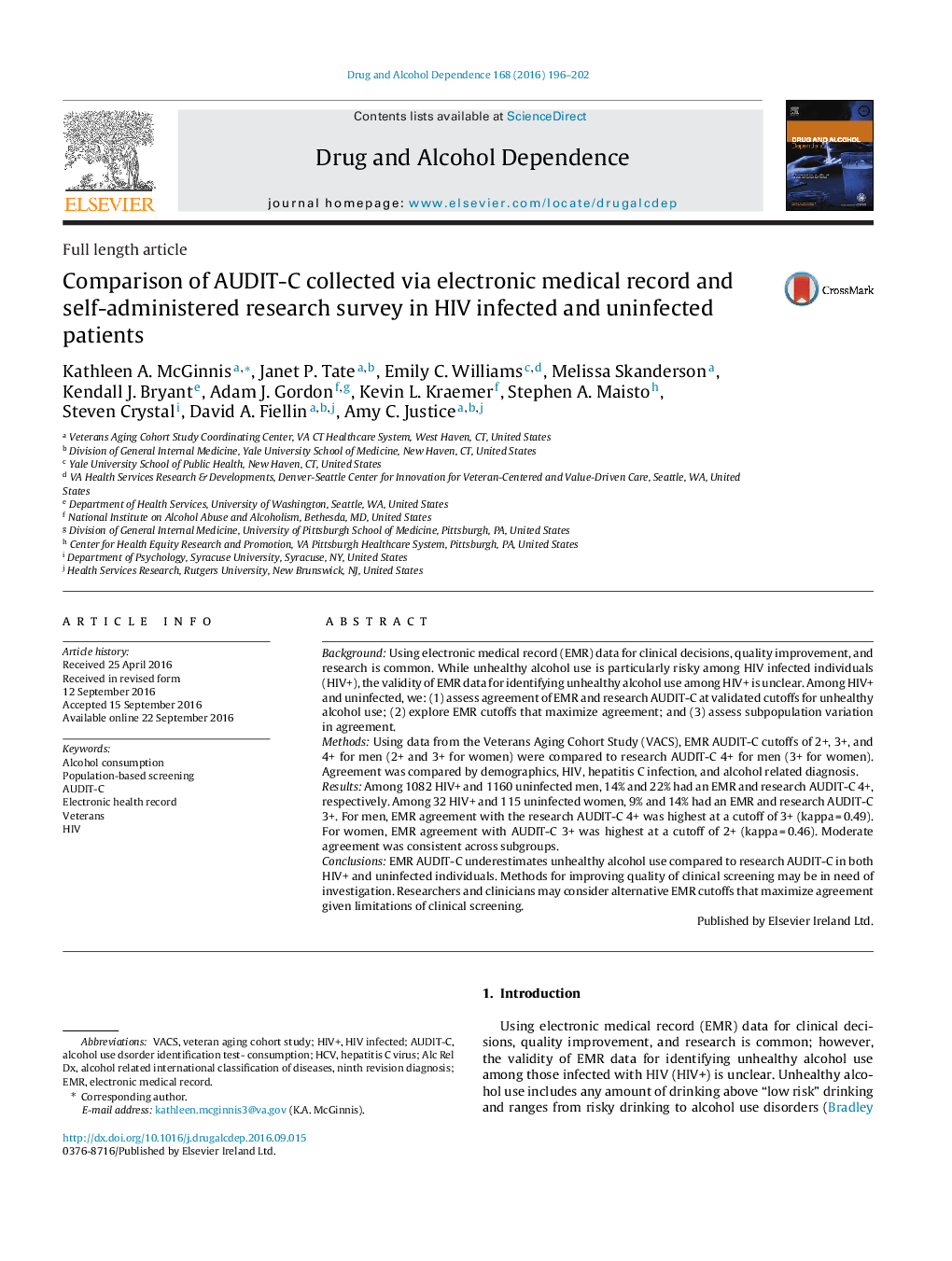| Article ID | Journal | Published Year | Pages | File Type |
|---|---|---|---|---|
| 5120464 | Drug and Alcohol Dependence | 2016 | 7 Pages |
â¢Electronic medical record (EMR) AUDIT-C under represents alcohol consumption.â¢EMR-based AUDIT-C may warrant lower thresholds.â¢Strategies to improve the quality of EMR-based AUDIT-C should be pursued.
BackgroundUsing electronic medical record (EMR) data for clinical decisions, quality improvement, and research is common. While unhealthy alcohol use is particularly risky among HIV infected individuals (HIV+), the validity of EMR data for identifying unhealthy alcohol use among HIV+ is unclear. Among HIV+ and uninfected, we: (1) assess agreement of EMR and research AUDIT-C at validated cutoffs for unhealthy alcohol use; (2) explore EMR cutoffs that maximize agreement; and (3) assess subpopulation variation in agreement.MethodsUsing data from the Veterans Aging Cohort Study (VACS), EMR AUDIT-C cutoffs of 2+, 3+, and 4+ for men (2+ and 3+ for women) were compared to research AUDIT-C 4+ for men (3+ for women). Agreement was compared by demographics, HIV, hepatitis C infection, and alcohol related diagnosis.ResultsAmong 1082 HIV+ and 1160 uninfected men, 14% and 22% had an EMR and research AUDIT-C 4+, respectively. Among 32 HIV+ and 115 uninfected women, 9% and 14% had an EMR and research AUDIT-C 3+. For men, EMR agreement with the research AUDIT-C 4+ was highest at a cutoff of 3+ (kappa = 0.49). For women, EMR agreement with AUDIT-C 3+ was highest at a cutoff of 2+ (kappa = 0.46). Moderate agreement was consistent across subgroups.ConclusionsEMR AUDIT-C underestimates unhealthy alcohol use compared to research AUDIT-C in both HIV+ and uninfected individuals. Methods for improving quality of clinical screening may be in need of investigation. Researchers and clinicians may consider alternative EMR cutoffs that maximize agreement given limitations of clinical screening.
